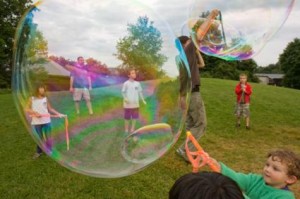By Shoshana Hayman, director of the Life Center/Israel Center for Attachment Parenting, http://lifeCenter.org.il
 You cannot understand sexuality without first understanding the attachment dynamic, psychologist Dr. Gordon Neufeld explains. The pursuit of proximity is one of the primary emotions that drive our behavior. The main way that the immature seek proximity and closeness is through the senses — being physically close: the most primitive way of attaching. On the heels of closeness through the senses is being the same as; by being the same as the person they are seeking contact with, they are holding that person close. This is also an immature way of attaching, for it does not allow room for individual expression. Following sameness, closeness is pursued through belonging and loyalty, still a rather shallow way to hold a person close as it does not leave enough room for your own personhood.
You cannot understand sexuality without first understanding the attachment dynamic, psychologist Dr. Gordon Neufeld explains. The pursuit of proximity is one of the primary emotions that drive our behavior. The main way that the immature seek proximity and closeness is through the senses — being physically close: the most primitive way of attaching. On the heels of closeness through the senses is being the same as; by being the same as the person they are seeking contact with, they are holding that person close. This is also an immature way of attaching, for it does not allow room for individual expression. Following sameness, closeness is pursued through belonging and loyalty, still a rather shallow way to hold a person close as it does not leave enough room for your own personhood.
When a person matures and develops the capacity for deeper relationships, they can hold a person close without physical proximity or having to be the same as. They can feel altruistic love and psychological intimacy; they can share the essence of their being. There is mutual respect, caring, and being careful when someone entrusts his heart to you. This kind of relationship becomes eternal.
Adolescence is a time of becoming a sexual being. Teens have a new awareness of themselves, and touch itself becomes sexualized. Sometimes, the only way teenagers can experience contact and closeness is through sexual interaction — when they have not developed the capacity for deep relationship. A large part of teenage sexuality today is about sameness: being alike. If the norm seems to be sexually active at the age of 15, there’s huge pressure on the teen to imitate, emulate, be the same as his friends, and therefore to become sexually active. Adolescents and children of elementary school age are being exposed to sexual images and pornography through advertising, television, and the internet, and attaching to images and superstars who are highly sexual. This contributes to promiscuity and increased sexual activity, as the immature seek to be like the images they attach to on the screen.
Attaching through belonging and loyalty in the sexual arena creates a huge problem with girls obeying and showing loyalty to please boys, creating intense feelings of possessiveness and jealousy. Kids have no idea of how attached they become; how crucial it is for them to be significant to another. Boys might need to be significant in the eyes of other boys and therefore, in order to get status and recognition, must become sexually active. Instead of sex being part of the context of a deep, caring, long-term relationship, it is being divorced from love and turned into a cheap, shallow, and selfish way to serve the adolescent’s need for attachment.
One’s sexuality is only as developed as one’s capacity for relationship. The greatest expression of sexuality is in the context of marriage, when the potential for all the elements of attachment can be fulfilled. (However, not everyone grows up as they grow older, and even in marriage, one’s capacity for relationship might be superficial, and so the expression of sexuality will also be superficial. )
Dr. Neufeld, who has helped rehabilitate many teens from their addictions, explains that when you understand the nature of relationships, you see that sexual liberation is a myth, as there is no such thing as sexual freedom. The desire for sexual interaction automatically brings the desire for fusion and union. It’s meant to create an exclusive relationship because this connection involves incredible vulnerability. Teenagers are shocked to discover that some kind of union has taken place that there is no way to get out of without getting hurt. The greatest wounding comes from separation, being rejected, being ignored, losing your specialness. These painful feelings trigger defenses in the brain that lead to numbing out of feelings, tuning out perceptions, and a hardening or toughness, which actually fuel the need to pursue closeness through the senses. We are fooling ourselves if we think that the answer is teaching teens to use birth control or condoms, for we are ignoring the emotional pain and psychological problems that are involved.
A teenager’s safest bet is strong relationships with his parents, grandparents, teachers, and coaches. These relationships are hierarchical, and are not sexualized. The teen, as well as younger children, should have his attachment needs met in the context of his relationships with the important adults in his life. This is what prevents the sexualization of relationships with peers, and buys time for the teen to truly mature and develop the capacity for a deep, meaningful relationship.
As Dr. Neufeld puts it, “Sex is ‘super glue’ and is meant to bind two people together.” With greater understanding of the reactions of the brain, science is coming to a very conservative approach towards sex, concurring with the ancient wisdom about creating the right context for sexual relationships.

 By Kelly Bartlett, certified positive discipline educator and leader for East Portland API, Oregon USA
By Kelly Bartlett, certified positive discipline educator and leader for East Portland API, Oregon USA In the United States alone, there are 3.2 million referrals to social services on allegations of child maltreatment each year — one-quarter of which are found to have a substantiated case of physical or sexual abuse or severe neglect. Seventy-five percent of these founded cases of abuse or neglect had no prior history. It’s an astounding number of children who aren’t living in safe, loving homes — especially knowing that these numbers don’t count the abused and neglected children living around the world. It’s a number that child maltreatment prevention researcher David Zielinski, PhD, wants to stick in your mind.
In the United States alone, there are 3.2 million referrals to social services on allegations of child maltreatment each year — one-quarter of which are found to have a substantiated case of physical or sexual abuse or severe neglect. Seventy-five percent of these founded cases of abuse or neglect had no prior history. It’s an astounding number of children who aren’t living in safe, loving homes — especially knowing that these numbers don’t count the abused and neglected children living around the world. It’s a number that child maltreatment prevention researcher David Zielinski, PhD, wants to stick in your mind. I was 31 years old. In my arms, I held another life. He was warm, pliable and soft, caked in afterbirth, and seemed breakable. He had huge blue eyes and now he relied on me. Such a huge realization: I had to grow up now as I was largely responsible for meeting all his needs – his nutrition, his physical and emotional needs, his safe passage through life.
I was 31 years old. In my arms, I held another life. He was warm, pliable and soft, caked in afterbirth, and seemed breakable. He had huge blue eyes and now he relied on me. Such a huge realization: I had to grow up now as I was largely responsible for meeting all his needs – his nutrition, his physical and emotional needs, his safe passage through life. We know the
We know the  Some years ago, my oldest son forgot his shoes on a routine trip to the grocery store. We’d struggled with the “shoe issue” for a while, and I hadn’t come up with a workable solution to help him remember to bring his shoes when we had errands to run. Frequently, we’d have to double back to the house to retrieve a pair, and I’d be impatient and irritable. This day, I decided to let him take charge. We arrived at the store and, sure enough, his shoes were nowhere to be found. He ended up wearing his little sister’s flip-flops for the (mercifully short) shopping trip. He never again forgot his shoes.
Some years ago, my oldest son forgot his shoes on a routine trip to the grocery store. We’d struggled with the “shoe issue” for a while, and I hadn’t come up with a workable solution to help him remember to bring his shoes when we had errands to run. Frequently, we’d have to double back to the house to retrieve a pair, and I’d be impatient and irritable. This day, I decided to let him take charge. We arrived at the store and, sure enough, his shoes were nowhere to be found. He ended up wearing his little sister’s flip-flops for the (mercifully short) shopping trip. He never again forgot his shoes.